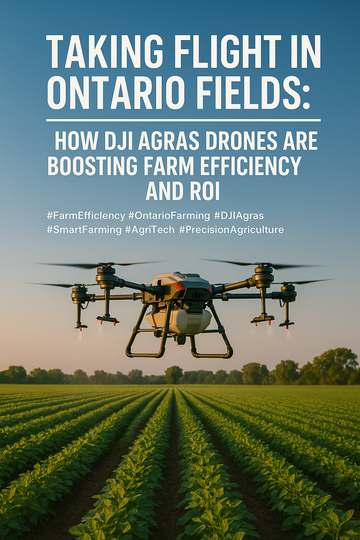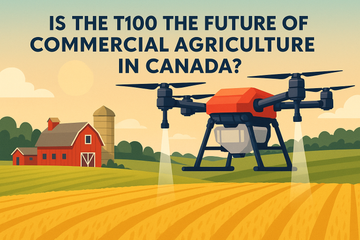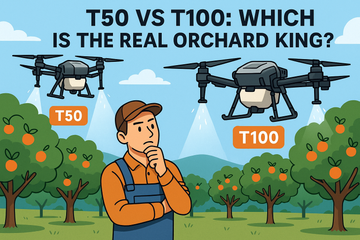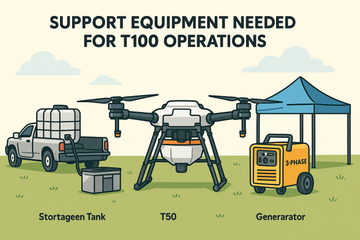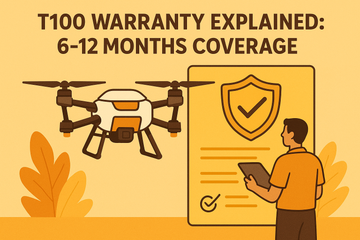Introduction
Ontario’s agriculture sector faces rising costs, labor shortages, and mounting environmental pressures. In this landscape, DJI Agras drones—specifically the Agras T25 and T50—are emerging as transformative tools. They streamline spraying and spreading, reduce overhead costs, and significantly improve return on investment (ROI).
But just how efficient are these drones compared to traditional farming methods? Let’s break it down.
Labor Efficiency and Cost Savings
Traditionally, spraying a 100-acre farm requires tractors, sprayers, and several workers. With a DJI Agras drone:
-
A single operator can cover up to 40 acres/hour (Agras T50).
-
Reduced need for tractors and sprayers, lowering fuel, maintenance, and labor costs.
Calculation Example:
-
Tractor spraying: ~10 acres/hour with fuel + 2 workers.
-
DJI Agras T50: ~40 acres/hour with 1 worker.
For a 100-acre farm:
-
Tractor: 10 hours, ~$600 in labor + $200 in fuel = $800 total.
-
Drone: 2.5 hours, ~$150 in operator cost + negligible electricity = $150 total.
👉 That’s a savings of $650 per 100 acres, and farms often spray 5–8 times per season. Over a season, a farm could save $3,250–$5,200 per 100 acres.
Eliminating Crop Loss from Wheel Tracks
One hidden cost of ground spraying is wheel-track loss, where tractors damage plants.
-
Average crop loss: 2–3% per pass.
-
On a 100-acre soybean field yielding 50 bushels/acre at $15/bushel, 2% loss = 100 bushels = $1,500 lost per pass.
Drones eliminate this loss entirely, immediately boosting ROI.
Resource Optimization
-
Water Savings: DJI drones use up to 90% less water than traditional methods.
-
Precise Spraying: Lower chemical use, reducing costs and environmental impact.
-
Fuel Reduction: Electric drones cut emissions and save diesel costs.
ROI in Ontario Farming
Factoring in labor savings, fuel reduction, and eliminated crop loss, DJI Agras drones typically pay for themselves in 1–2 growing seasons.
For larger farms, the ROI horizon is even shorter—especially when drones are used for both spraying and spreading applications (fertilizer, seeds, cover crops).
Conclusion
From Niagara fruit orchards to Southwestern Ontario’s corn and soybean fields, DJI Agras drones are more than just futuristic tools—they’re practical, cost-saving investments. By reducing overhead, protecting crops, and improving yields, they help Ontario farmers stay competitive in an evolving agricultural economy.
#FarmEfficiency #OntarioFarming #DJIAgras #SmartFarming #AgriTech #PrecisionAgriculture #FarmROI #SustainableFarming


